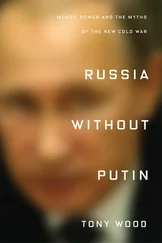Such a steep increase in energy prices set off global inflation and led to deep economic hardship in much of the developed world. Although the embargo was ended in March 1974, oil prices remained elevated versus their previous level and volatility persisted. The overthrow of the Shah of Iran by Ayatollah Khomeini in 1979 set off a second oil price shock, with oil prices doubling over 12 months to $39.50 a barrel. 69 Faced with this price volatility, businesses from airlines to utilities scrambled to hedge the cost of their oil. NYMEX started offering trading in futures contracts on home heating oil and gasoline to meet this demand.
In March 1983, NYMEX launched a futures contract on light sweet crude oil delivered to tanks located in Cushing, Oklahoma. This grade of oil, known as West Texas Intermediate (WTI), became a global standard for oil prices. The benefit of a standardised benchmark is that it serves as a reference against which other grades of oil can be priced and concentrates trading liquidity, so as to enable traders to transact large quantities of oil without causing major price swings. In 1988, the International Petroleum Exchange (IPE) in London launched futures contracts on Brent Crude, a heavier grade of oil extracted from the North Sea. The IPE was acquired by the Atlanta-based Intercontinental Exchange (ICE) in 2001 and Brent has now overtaken WTI to become the benchmark used to price over three-quarters of the world's traded oil.
Growth in derivatives trading from the 1980s has been explosive. This was fuelled by a set of factors that each reinforced the others: growth in financial markets; consequent greater demand for hedging tools; product innovations by the financial industry; a larger supply of graduates with the necessary quantitative skills; and technology-enabled electronification of financial trading. The pros and cons of this growth are explored in Chapter 7; however, the development of these derivatives has been critical in consolidating the dollar's global position.
As of the end of 2020, the total notional value outstanding of all derivatives contracts was estimated to be $667 trillion. 70 This compares to the $110 trillion combined market capitalisation of all stock markets in the world 71 and $139 trillion in total debt outstanding in global bond markets. 72 It is also roughly 7.9 times the size of global GDP. These contracts are vital to the smooth functioning of international trade and financial markets, as they allow businesses and individuals to manage their risks across foreign exchange, interest rates, credit, stocks and commodity prices. To be effective risk management tools, derivatives must be liquid and, preferably, supported by infrastructure such as clearing houses to help minimise counterparty risks. 73 Given the sheer size of this ecosystem of products and infrastructure, it would be extremely difficult for this system to be replaced. And since the vast majority of these derivatives are priced in US dollars, the growth and standardisation of derivatives contracts in the past half-century has powerfully entrenched the role of the US currency.
Unlike stocks, bonds or other assets, derivatives have a peculiar characteristic. Since the value of a futures or options contract is inherently derived by reference to the price of the underlying asset or to a particular event, for every winner on a derivatives contract, there must be a loser. In contrast, investors holding a stock that goes up can all benefit from the increase in the stock's value. However, in order to go long on a derivative (in other words, to bet that its value will go up), there must be someone on the other side of the trade willing to go short (or bet that its value will go down). During the term of the contract, the price of the reference asset may fluctuate significantly. In order to protect against the default of one or other party, when the price moves against one side of the contract, the losing party is usually required to post collateral in order to provide security that they can meet their obligation. The growth of derivatives markets has, therefore, multiplied the demand for high quality assets that can be posted to meet collateral requirements.
Further, not all investors seeking to avoid market volatility risks are able to do so using derivatives. This has spawned demand for secure and highly liquid assets that can be held as insurance against sudden and large funding needs. The largest issuer of such assets in the world is the US Treasury.
As of the end of 2020, the total amount of US Treasury securities outstanding stood at $27.8 trillion. 74 These securities represent the cumulative amount of money raised by the US federal government to fund its spending requirements over and above what it collects in taxes. They are the largest and most liquid asset class in the world, with around one-third of the public debt owned by overseas investors. 75 Although the number seems staggeringly large, there is theoretically no risk that the US government will default on this debt. This is because all of its outstanding debt is denominated in US dollars and, since Nixon took the US off the gold standard, the US Treasury can simply print more dollars to meet its repayment obligations as they fall due. For this reason, US Treasuries are considered to be ‘risk free’ assets.
The history of the US Treasury securities market as we know it today is surprisingly short. Up until the US entered WW1, there was only around $1 billion of Treasury debt outstanding. New offers were infrequent. The last time before 1917 that Treasury securities were issued was in 1911 to help finance the construction of the Panama Canal. 76 Prior to that, the last offering had been in 1900 for the refinancing of bonds that had been issued during the Spanish-American War of 1898. 77 Treasury bonds were issued on a project finance basis and required Congressional approval for each issue. Congress would therefore supervise all the terms of each bond, including the interest rate and the maturity. It was not until 1935 when the Roosevelt Administration was engaging in consistent deficit spending to combat the Great Depression that Congress switched to regulating the total value of bonds that could be issued, rather than the specific terms of each issue. In 1939, Congress agreed to turn over decisions regarding the issuance of Treasury securities to the Secretary of the Treasury, limiting itself to specifying only the maximum debt that could be outstanding – the so-called ‘debt ceiling’.
To finance its participation in WW1, Woodrow Wilson's administration issued five ‘Liberty Loans’ totalling $21.4 billion, with maturities between four and 30 years. The government debt was gradually reduced during the 1920s and, by the time Franklin Roosevelt took office in 1933, the outstanding public debt stood at around $20 billion, or 20 percent of GDP. 78 From there, the size of the US deficit continued to grow through WW2 and peaked at 119 percent of GDP at the end of the war. 79 Each US administration since then has added to the balance of US Treasury debt outstanding. However, as America enjoyed strong economic growth, the debt as a percentage of GDP steadily declined to 24.6 percent of GDP in 1974. 80 From that point on, however, slower economic growth and rising government expenditure saw the US national debt grow at a much faster pace than the economy.
It's not just the government that has continually spent more than it earns; American consumers have done so too. This might never have been possible without an audacious deal negotiated by former Treasury Secretary William Simon to ensure a stable source of funding from overseas.
Born in Paterson, New Jersey in 1927, William Edward Simon was the son of an insurance executive. Handsome and athletic, he served in the US Army before attending Lafayette College in Easton, Pennsylvania, where he was a member of the Delta Kappa Epsilon fraternity. Upon graduation in 1952, he headed to Wall Street, where he eventually became the partner in charge of the Government and Municipal Bond Departments at Salomon Brothers. The chain-smoking Simon became Deputy Secretary of the Treasury in January 1973 and launched the Federal Energy Administration to address the energy crisis at the height of the Arab oil embargo. He was appointed Treasury Secretary in May 1974, after George Shultz resigned from the Nixon Administration.
Читать дальше












